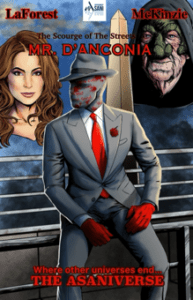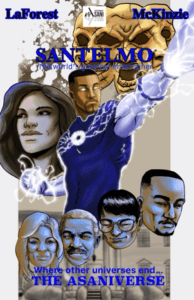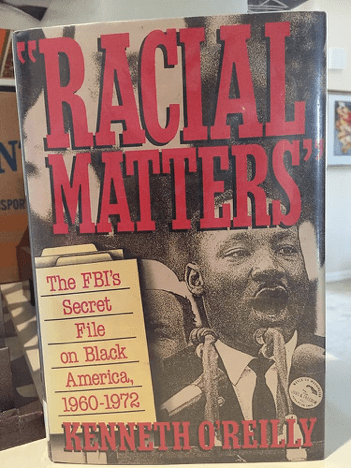I Heard It Through The Grapevine

“It seems from rumors
I just can’t get away
I’ll bet there’ll even be rumors
Floating around on judgment day”
Timex Social Club
The Plot of Undercover Brother
The B.R.O.T.H.E.R.H.O.O.D., a secret organization that battles The Man’s influence, determines The Man is behind is behind Gen. Warren Boutwell, a United States Army general’s change of heart from running for POTUS to operating a fried chicken franchise, where The Man will distribute a mind-control drug through Boutwell’s fried chicken, infecting other black celebrities and making them act white, as well as marketing the chicken nationwide to land a crushing blow to African-American culture.
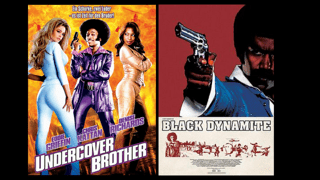
The Plot of Black Dynamite
Upon storming the warehouse to capture a big drug shipment of a top-secret operation called “Code Kansas”, find no drugs in the warehouse, only “Anaconda” brand malt liquor, a government-produced brand that, according to the advertising slogan, “Gives You Ooooooo!” by deciphering the slogan and uncover “Code Kansas” as a plan to literally emasculate African-American men through Anaconda Malt Liquor, which is formulated to “give (you) a little dick”.
“I Heard It Through the Grapevine” explores how rumors that run rife in African-American communities, concerning such issues as AIDS, the Ku Klux Klan and FBI conspiracies, translate white oppression into folk warnings, and are used by the community to respond to a hostile dominant culture.
While both of these affectionate parodies of Blaxploitation films are plaid for laughs, they touch upon actual concerns of African Americans.
Undercover Brother centered on the rumor that the Ku Klux Klan operated a nationwide fried chicken franchise with a special ingredient to make African American Men sterile.
While Black Dynamite centered on the rumor that the Ku Klux Klan sold a soft drink nationwide with a special ingredient to make African American Men sterile.
Why? Why do African Americans continue to believe and perpetuate these rumors?

The Tuskegee Study of Untreated Syphilis in the Negro Male (informally referred to as the Tuskegee Experiment or Tuskegee Syphilis Study) was a study conducted between 1932 and 1972 by the United States Public Health Service (PHS) and the Centers for Disease Control and Prevention (CDC) on a group of nearly 400 African American men with syphilis.
The purpose of the study was to observe the effects of the disease when untreated, though by the end of the study medical advancements meant it was entirely treatable. The men were not informed of the nature of the experiment, and more than 100 died as a result.
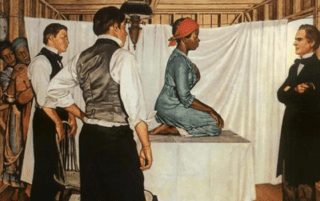
“Black Women Were Tortured To Develop Gynaecology Methods. Midwives Want Them Remembered”
Surgeon James Marion Sims brutalised Anarcha Westcott and dozens of others. Now a statue to their memory could be built at the Royal College of Obstetricians and Gynaecologists.
Anarcha Westcott was a teenager who had just given birth for the first time when she was forcibly separated from her baby and subjected to brutal experimental gynaecological surgery without an anaesthetic.
Her torturer, Dr James Marion Sims, is widely regarded as the “father of modern gynaecology” – but the trauma through which he put Westcott and other unconsenting, enslaved Black women while developing his techniques has been largely forgotten.
Now modern-day midwives have launched a campaign to commemorate Sims’ victims, who between 1845 and 1849 endured some 30 procedures as Sims perfected his method of fistula surgeries.
Heidi Downes, a midwife in London, is lobbying for a monument to be dedicated to these women as Black Lives Matter campaigners topple slaver statues around the country.”

SPENCER PLATT VIA GETTY IMAGES
That said, in 2018 New York officials removed a sculpture of Sims from Central Park following eight years of sustained protests from Black activists. It had been there for 80 years.
“I have been a midwife for nearly six years and prior to this trained for three years. In this time I did not know of Anarcha and the suffering she and the other enslaved women endured but I was aware of the Sims speculum,” Downes wrote on the change.org campaign page.”
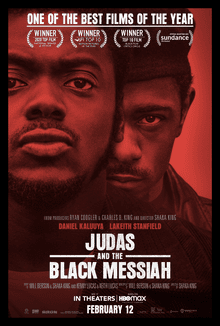
In 1968, 19-year-old petty criminal William O’Neal is arrested in Chicago after attempting to steal a car by posing as a federal officer. He is approached by FBI Special Agent Roy Mitchell, who offers to have O’Neal’s charges dropped if he works undercover for the Bureau. O’Neal is assigned to infiltrate the Illinois chapter of the Black Panther Party (BPP) and obtain information on its leader, Fred Hampton.
O’Neal begins to grow close to Hampton, who works to form alliances with rival gangs and militia bands while extending community outreach through the BPP’s Free Breakfast for Children Program. Hampton’s persuasive oratory eventually help to form the multiracial Rainbow Coalition along with the Young Lords and Young Patriots Organization. Hampton also falls in love with Deborah Johnson, a fellow BPP member. O’Neal begins to relay intelligence to Mitchell, who in return pays him.
After Hampton is imprisoned for allegedly stealing $71 worth of ice cream bars, O’Neal begins to rise through the ranks and is promoted to security captain. When a shootout between the Chicago Police and the BPP occurs at the chapter office, O’Neal sneaks out as the police firebomb the office. Outraged that he could have been killed, O’Neal attempts to quit being an informant, but Mitchell refuses, threatening him with the original charges.
Three months later, Hampton is released from prison while appealing his charges and reunites with Deborah, now pregnant with his child. BPP member Jimmy Palmer, who was hospitalized with non-life-threatening injuries after being shot by a police officer, dies unexpectedly while being transferred to another hospital. Assuming police have murdered Jimmy, fellow member Jake Winters engages in a a shootout with police, killing several officers before being gunned down himself.
After Hampton’s appeal is rejected, FBI Director J. Edgar Hoover orders that he be “neutralized” rather than allowing him to return to prison. Mitchell coerces O’Neal into helping with the plan by warning him that the BPP will turn on him if they find out he’s an informant, and O’Neal reluctantly agrees to help. O’Neal is later handed a vial of sedatives and ordered to drug Hampton’s drink with it by another undercover FBI collaborator, who hands O’Neal his old fake FBI badge to prove his credentials.
The following evening, BPP members gather at Hampton’s apartment before he must depart for prison. An allied gang leader offers Hampton money to flee the country, but he turns it down and instead orders that a clinic to be established with the money in Jake’s memory. During the evening, O’Neal reluctantly drugs Hampton’s drink and departs soon after. Hours later, officers and agents raid the apartment and assassinate Hampton after shooting or injuring the other Black Panthers, while Deborah is arrested.
Later, O’Neal meets with Mitchell, who gives him money and a pair of keys to a gas station which is being given to him. O’Neal attempts to quit again but reluctantly accepts the money and keys and puts them in his pocket.
Archive footage is shown of Hampton’s speeches, including his funeral procession, and an interview O’Neal gave in 1989. The title cards state that O’Neal continued to work as an informant within the BPP before committing suicide in 1990.
A lawsuit was filed against the FBI in 1970 and 12 years later was settled for $1.85 million. As of the film’s release, Fred Hampton Jr. and his mother serve as chairman and board member of the Black Panther Party Clubs.
https://en.wikipedia.org/wiki/Judas_and_the_Black_Messiah
“This book looks at part of American history that is difficult to delve into — the FBI’s counter-intelligence efforts against the civil rights movement. The FBI didn’t just investigate the movement, but launched a secret program to destabilize it.
This effort included sending anonymous poison-pen letters to create violence among black-nationalist groups and to break up the marriages of movement leaders.
J. Edgar Hoover could not believe black Americans capable of producing a grassroots movement to gain legal rights; they could only be the puppets of a Communist conspiracy directed from abroad. In spite of all this, the book is an even-handed account.
The FBI also directed secret campaigns against white-supremacy organizations. No one is spared in this history, including the Kennedy and Johnson administrations; the “good guys” were few and far between, but some of them were working honorably at the FBI. Hoover was also a product of his time, and his FBI operated within the context of American culture and history.
Kenneth O’Reilly published the book in 1989 and may not have had the advantage of new material that has come to light; but more recent histories of the FBI that I’ve read have neither invalidated nor greatly augmented his conclusions.”
So why do African Americans continue to believe and perpetuate these rumors?



